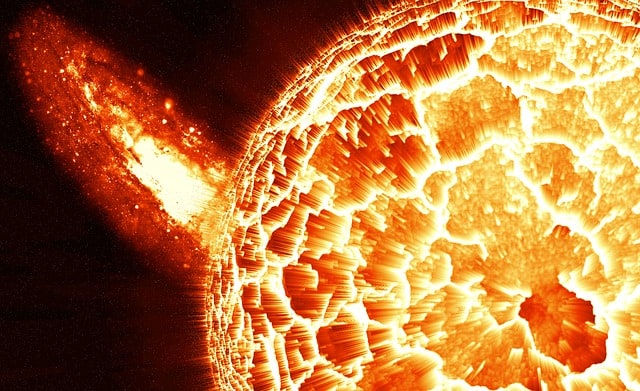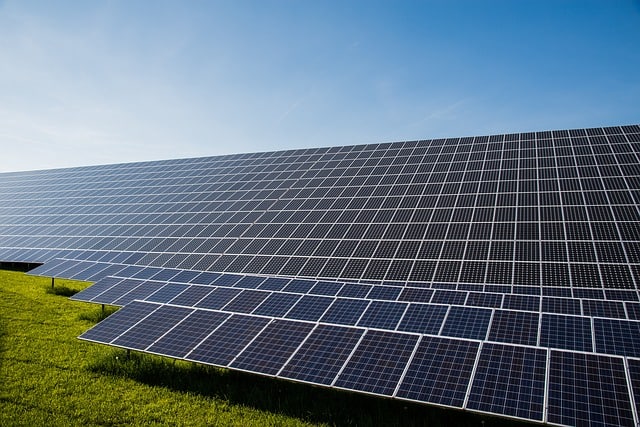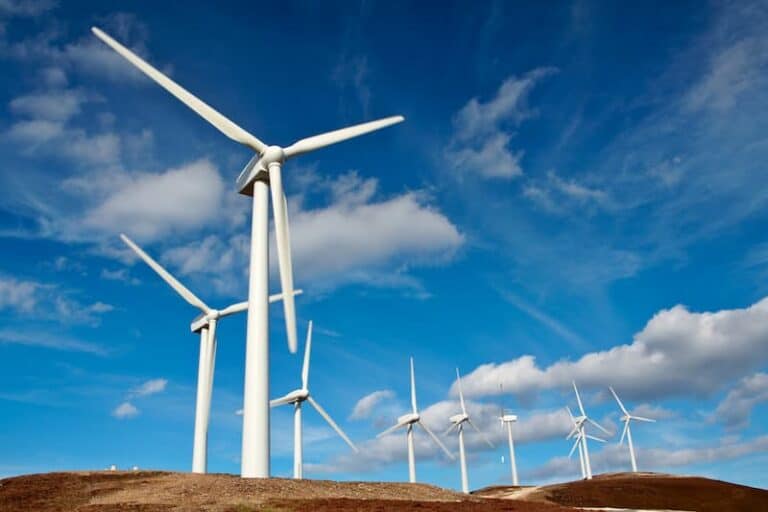What is Energy and What are Different Types of Energy?

In the simplest terms, energy is the ability to do work. Energy is also represented in terms of any source of usable power. In different ways, energy is used to do almost everything such as jumping, walking and the operation of machinery. For instance, the foods human consume contain energy which is stored in the body and converted into energy every time we engage in any duty or work such as sports. The stored energy is termed as potential energy while the working energy is termed as kinetic energy.
The electricity used in our homes is also a form of energy because it is a form of usable power. The places from which the different energies are obtained are known as energy sources. Examples include burning coal, nuclear reactions, petroleum, and so on. Energy sources are divided into two major categories namely renewable energy and non-renewable energy.
Renewable energy is from sources that can be replenished easily while non-renewable energy cannot be easily replenished. Example of renewable energy is wind energy while fossil fuel is an example of non-renewable energy. In physics, energy is explained as the thermodynamic quantity equivalent to the capacity of a physical system to do work. The units of energy are ergs or joules.
Different Types of Energy
-
Kinetic Energy
The energy in all moving objects is known as kinetic energy. It is also regarded as movement energy because it is the energy contained by any object in motion or movement. In scientific terms, kinetic energy is the work needed to move an object to a particular speed. Objects that contain kinetic energy range from large moving things like airplanes, vehicles and even the earth and also very small things like atoms and moving gases. The heavier and faster the objects move, the more the possessed kinetic energy. The simplest best examples of kinetic energy are moving water and water.
-
Potential Energy
Potential energy is contained in any object that is at rest. It is also called stored energy. It is the general opposite of kinetic energy. The heavier the object, the more its potential energy. A good example is the water held up in a hydroelectric power dam at a raised level which is then used to run the turbines when it is released, bringing about kinetic energy.
-
Mechanical Energy
Mechanical energy refers to transferred energy. It results from the mix of kinetic and potential (stored) energy. To understand how these two types of energy work, we need to know the difference between the two. Kinetic energy is due to an objects motion and potential (stored) energy is due to an objects position. For instance, the bawling ball has mechanical energy in that the ball is in motion and then when it strikes the pin the potential (stored) energy is released thus transferring mechanical energy to the pins.
The same applies when there is work done in opening a door by pushing or pulling it. The stored energy in a person is used to push the door through kinetic energy. In short, mechanical energy is the force that acts on an object to make it change shape, move, or displace from its original location. In other words, mechanical energy is the sum of potential (stored) and kinetic energy that is used to do work.
-
Chemical Energy
Chemical energy is the stored energy in the bonds of chemical compounds such as molecules and atoms. The energy is freed in a chemical reaction, most of the time producing heat as by-product. This process is called exothermic reaction. Petroleum, coal, gas, biomass, and batteries are examples of stored chemical energy. Ordinarily, when chemical energy is freed from a substance, it is changed into a totally new substance.
For instance, when an atomic bomb explodes, the stored chemical energy is freed into the environment as kinetic energy, sound energy, and thermal energy. Food is a prime example of chemical energy as the stored energy is released and broken down during digestion. During the breakdown of food, thermal energy is released. Dry wood is another example of chemical energy which releases light and thermal energy when burnt and it produces ashes as a by-product.
-
Thermal Energy
Thermal energy is also known as heat energy. It is determined by the activeness of atoms or molecules in an object. These molecules and atoms move or vibrate continuously based on temperature levels. The molecules and atoms of a hot object present rapid movement whereas the atoms and molecules of cooler objects present less movement. Hence, thermal energy is the energy that comes from the temperature of a material or object.
Any substance or object with a high temperature has more of its particles in vibration, which means it has high thermal energy. For example, boiling water has thermal energy in the form of kinetic energy from its vibrating particles. Adding cold water to the boiling water transfers the thermal energy which reduces the vibration of the particles. Thermal energy is transferred from one substance or particle to another via conduction, radiation, and convection.
-
Electrical Energy
Electrical energy is the energy caused by the movement of electrons. It is commonly transported via power lines and converted into other forms of energy. The movement of the electrons is based on the amount of possessed energy. The materials the transfer the energy are mediums that as specially known as conductors. Electricity is generated when this electrons move from one atom to another via electricity conductors (wires such as iron). Even liquids and air can have electrons that can discharge and transfer electrical energy. Lighting is an example of natural electrical energy, also called static electricity.
-
Gravitational Energy
Gravitational energy is often confused with potential energy. Potential energy is stored in any object, but gravitational energy is only stored in the height of the object. It can simply be described as the kinetic energy or motion caused by gravity. Whenever an object is at a raised point, there is always a force holding it from falling, but if there is no force holding it back it will definitely be pulled down by gravity. An example is a sky diver or a person who dives from a raised point into a pool of water. The force pulling the person down to the ground or into the pool of water is gravitational energy.
-
Radiant Energy
Electromagnetic waves make up radiant energy. It is the form of energy that can move through space such as the sun’s rays or heat. There is no medium transmitting the sun’s energy to earth apart from the electromagnetic waves. In other words, electromagnetic waves are associated with electric and magnetic fields resulting from the acceleration of an electric charge.
A common example is the magnetic force that pulls metals to a magnet. Electromagnetic waves can travel through anything including vacuum, solids or particles. Accordingly, the energy in electromagnetic waves is what is known as radiant energy. The microwave heats/cooks food on the basis of radiant energy.
-
Sound Energy
Sound energy is released from vibrating objects. It may also be considered as the energy through substances in longitudinal (rarefaction/compression) waves. Sound energy is generated when a substance or object is made to vibrate. In precise, it is the wave transferred through a substance or object. For instance, a vibrating guitar transfers energy to the surrounding as sound. The kinetic energy from the moving air transfers the sound to the people’s eardrums. Sound energy is measured in pascals and decibels.







